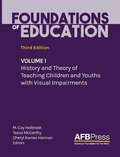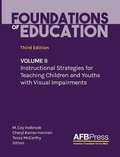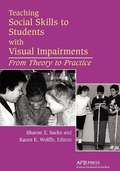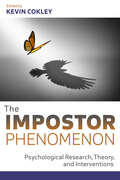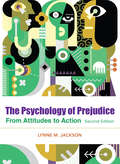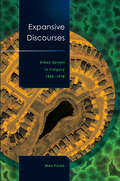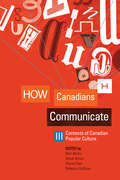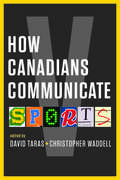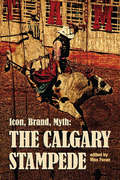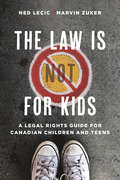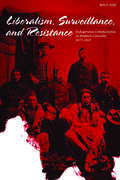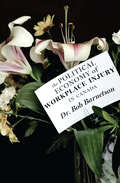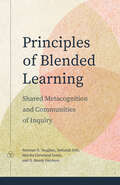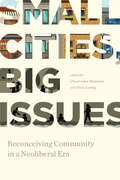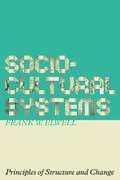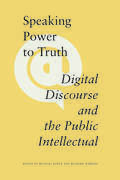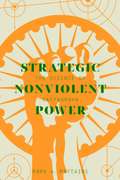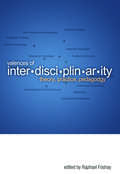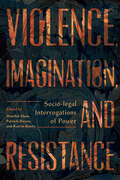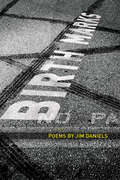- Table View
- List View
Foundations of Education 3e, Vol 1
by M. Cay Holbrook Tessa Mccarthy Cheryl Kamei-Hannan EditorsThe highly anticipated third edition of the essential textbook in the field of blindness and visual impairment is completely revised and updated for the 21st century. In addition to the latest information and best practices, Volume I, History and Theory of Teaching Children and Youth with Visual Impairments, includes a whole new set of chapters that provide additional perspectives on the educational system and focus on crucial topics that connect the education of students with visual impairment to the broader context of educational theory. Volume II, Instructional Strategies for Teaching Children and Youths with Visual Impairments, contains additional material on planning instruction, moving from assessment to instruction, and supporting students with visual impairments in the general education classroom. Instructional strategies are also highlighted, with chapters dedicated to each area of the core or expanded core curriculum. Icons located throughout both volumes direct readers to audio introductions, chapter overviews, learning activities, videos, resource lists, and downloadable forms housed in an exclusive, web-based Learning Center that enriches this foundational textbook as never before.
Foundations of Education Volume 2: Instructional Strategies for Teaching Children and Youths with Visual Impairments
by M. Cay Holbrook Tessa Mccarthy Cheryl Kamei-Hannan EditorsThe highly anticipated third edition of the essential textbook in the field of blindness and visual impairment is completely revised and updated for the 21st century. In addition to the latest information and best practices, Volume I, History and Theory of Teaching Children and Youth with Visual Impairments, includes a whole new set of chapters that provide additional perspectives on the educational system and focus on crucial topics that connect the education of students with visual impairment to the broader context of educational theory. Volume II, Instructional Strategies for Teaching Children and Youths with Visual Impairments, contains additional material on planning instruction, moving from assessment to instruction, and supporting students with visual impairments in the general education classroom. Instructional strategies are also highlighted, with chapters dedicated to each area of the core or expanded core curriculum. Icons located throughout both volumes direct readers to audio introductions, chapter overviews, learning activities, videos, resource lists, and downloadable forms housed in an exclusive, web-based Learning Center that enriches this foundational textbook as never before.
Teaching Social Skills to Students with Visual Impairments: From Theory to Practice
by Sharon Z. Sacks Karen E. WolffeHow do children become social beings? When a child is unable to observe visually and imitate how other people react and interact, this complex developmental process can become fragmented and incomplete. As a result, providing specific information, direct instruction, and opportunities for social interaction to children who are blind or visually impaired is critical to their growth and education. Edited by two groundbreaking educators and researchers, with contributions from other outstanding educators and researchers in this area, Teaching Social Skills to Students with Visual Impairments explores what theory can tell us about how children who are visually impaired become socially skilled individuals. It then presents a compendium of techniques and strategies for helping youngsters, from preschoolers through young adults, including those with additional disabilities, develop and refine social skills.
Apple Interface Mysteries
by Michael E. CohenApple devices are supposed to be easy to use, and they generally are—at least for basic things. But over the years, as features have multiplied exponentially and hardware has changed dramatically, the user interfaces of Macs, iPhones, and iPads (among other Apple products) have become increasingly inscrutable. This book explores the mysteries of how and why things are the way they are now—and shows you how you can solve your own Apple usability puzzles.
Take Control of Siri
by Scholle McFarlandWhen it comes to using your Apple devices, Siri is increasingly the hands-free, time-saving, and fun technology that ties everything together. Whether you want to ask a question, make a call, find your iPhone, or set a timer—not only can Siri do it, but it usually offers the fastest way. This book explores how to get the most out of Siri on your iPhone, iPad, Apple Watch, Mac, and HomePod.
Take Control of Siri
by Scholle McFarlandWhen it comes to using your Apple devices, Siri is increasingly the hands-free, time-saving, and fun technology that ties everything together. Whether you want to ask a question, make a call, find your iPhone, or set a timer—not only can Siri do it, but it usually offers the fastest way. This book explores how to get the most out of Siri on your iPhone, iPad, iPod touch, Apple Watch, Mac, and HomePod.
Take Control of Slack
by Glenn FleishmanWrap your head around how Slack group messaging works, learn to communicate and collaborate using its many features, and discover how to use integrations and notifications to get more out of it. The book explains finding channels, starting conversations, posting messages, interacting with bots, and more! The Slack web app is covered, along with apps for macOS, Windows, iOS, and Android.
The Impostor Phenomenon: Psychological Research, Theory, and Interventions
by Kevin CokleyThis book offers a scientific investigation into the impostor phenomenon, a concept that has long been misunderstood in popular culture. Much of the conventional wisdom about the impostor phenomenon is driven by intuitive, common-sense based recommendations about how to cope with and conquer impostor feelings. Unfortunately, much of this discourse is neither rooted in nor informed by empirical research. There are many important theoretical and methodological questions regarding the impostor phenomenon that remain unanswered, such as whether the impostor phenomenon is a personality trait at the core of one's identity, or merely a predisposition triggered by circumstances or fears of being evaluated. This book describes the theoretical underpinnings of the impostor phenomenon along with common measurement issues, implications for mental health and achievement, its relative prevalence among various population groups, and practical applications of the concept in psychotherapy and mental health treatment more broadly.
The Psychology of Prejudice: From Attitudes to Social Action
by Lynne M. JacksonThis second edition of Lynne Jackson&’s seminal text presents a significantly updated review of the psychological underpinnings of prejudicial attitudes and behaviors. Given the weaponization of cultural and ideological differences in politics, education, and social media today, the need to understand and fight prejudice is urgent. Jackson synthesizes new research from various areas of psychology to analyze contemporary examples of prejudice, including anti-immigrant policies, police violence against minorities, anti-woman and LGBTQ backlash, and ageist cultural biases. She also explores frequently overlooked issues related to prejudice, such as environmental inequality and speciesism. Drawing from literature in social, developmental, evolutionary, and personality psychology, Jackson explores the environmental and biological roots of prejudice, explaining how societal factors and human predispositions shape how people understand and respond to diversity. She draws connections between prejudice and other social justice issues showing how it is related to greater social problems like inequality and political polarization. She also offers readers a blueprint for overcoming these deeply embedded biases by improving intergroup attitudes and building communities to create progressive social change.
Expansive Discourses: Urban Sprawl in Calgary, 1945-1978
by Max ForanThis is a groundbreaking study of urban sprawl in Calgary after theSecond World War. The interactions of land developers and the localgovernment influenced how the pattern grew: developers met marketdemands and optimized profits by building houses as efficiently aspossible, while the city had to consider wider planning constraints andinfrastructure costs. Foran examines the complexity of theirinteractions from a historical perspective, why each party acted as itdid, and where each can be criticized.
How Canadians Communicate III
by Bart Beaty Derek Briton Gloria FilaxContexts of Canadian Popular Culture
How Canadians Communicate V: Sports
by Christopher Waddell David TarasFewer Canadians than ever are lacing up skates, swimming lengths at the pool, practicing their curve ball, and experiencing the thrill of competition. However, despite a decline in active participation, Canadians spend enormous amounts of time and money on sports, as fans and followers of sporting events and sports culture. Never has media coverage of sports been more exhaustive, and never has it been more driven by commercial interests and the need to fuel consumerism, on which corporate profits depend. But the power plays now occurring in the arena of sports are by no means solely a matter of money. At issue as well in the media capture of sports are the values that inform our daily lives, the physical and emotional health of the population, and the symbols so long central to a sense of Canadian identity. Writing from a variety of perspectives, the contributors to this collection set out to explore the impact of the media on our reception of, and attitudes toward, sports—to unpack the meanings that sports have for us as citizens and consumers. Some contributors probe the function of sports as spectacle—the escalation of violence, controversies over drug use, and the media’s coverage of tragic deaths—while others shed light on the way in which the media serve to transform sports into a vehicle for the expression of identity and nationalism. The goal is not to score points but to prompt critical discussion of why sports matter in Canadian life and culture and how they contribute to the construction of identity.
How to Read Like You Mean It (Cultural Dialectics)
by Kyle ConwayIn this candid and concise volume, Kyle Conway, author of The Art of Communication in a Polarized World, considers how we can open ourselves to others and to ideas that scare us by reading difficult texts. Conway argues that because we resist ideas we don’t understand, we must embrace confusion as a constitutive part of understanding and meaningful exchange, whether between a reader and a text or between two people. Building on the work of hermeneutics scholar Paul Ricoeur, Conway evaluates the recurring paradox of miscommunication that results in deeper understanding and proposes strategies for reading that will allow individuals give up the illusion of certainty. In elegant and compelling prose, Conway introduces readers to the idea that it is through uncertainty that we can gain access to new and meaningful worlds—those of texts and other people.
Icon, Brand, Myth: The Calgary Stampede
by Max ForanAn investigation of the meanings and iconography of the Stampede: an invented tradition that takes over the city of Calgary for ten days every July. Since 1923, archetypal "Cowboys and Indians" are seen again at the chuckwagon races, on the midway, and throughout Calgary. Each essay in this collection examines a facet of the experience--from the images on advertising posters to the ritual of the annual parade. This study of the Calgary Stampede as a social phenomenon reveals the history and sociology of the city of Calgary and the social construction of identity for western Canada as a whole.
The Law is (Not) for Kids: A Legal Rights Guide for Canadian Children and Teens
by Ned Lecic Marvin A. ZukerIn this practical guide to the law for young people of Canada, Ned Lecic and Marvin Zuker provide an all-encompassing manual meant to empower and educate children and youth and those that serve them. The authors address questions about how rights and laws affect the lives of young people at home, at school, at work, and in their relationships as they draw attention to the many ways in which a person’s life can intersect with the law. Deliberately refraining from taking a moral approach, the authors instead advocate for the rights of children and provide examples of how young people can get their legal rights enforced. In addition to being critical information for youth about citizenship, The Law is (Not) for Kids is a valuable resource for teachers, counsellors, lawyers, and all those who support youth in their encounters with the law.
Liberalism, Surveillances and Resistance
by Keith D. SmithIndigenous communities in Western Canada, 1877-1927
Political Economy of Workplace Injury in Canada
by Bob BarnetsonWorkplace injuries are common, avoidable, and unacceptable. The Political Economy of Workplace Injury in Canada reveals how employers and governments engage in ineffective injury prevention efforts, intervening only when necessary to maintain the standard legitimacy. Dr. Bob Barnetson sheds light on this faulty system, highlighting the way in which employers create dangerous work environments yet pour billions of dollars into compensation and treatment. Examining this dynamic clarifies the way in which production costs are passed on to workers in the form of workplace injuries.
Principles of Blended Learning: Shared Metacognition and Communities of Inquiry (Issues in Distance Education)
by Norman D. Vaughan Deborah Dell Martha Cleveland-Innes D. Randy GarrisonThe rapid migration to remote instruction during the Covid-19 pandemic has expedited the need for more research, expertise, and practical guidelines for online and blended learning. A theoretical grounding of approaches and practices is imperative to support blended learning and sustain change across multiple levels in education organizations, from leadership to classroom. The Community of Inquiry is a valuable framework that regards higher education as both a collaborative and individually constructivist learning experience. The framework considers the interdependent elements of social, cognitive, and teaching presence to create a meaningful learning experience. In this volume, the authors further explore and refine the blended learning principles presented in their first book, Teaching in Blended Learning Environments: Creating and Sustaining Communities of Inquiry, with an added focus on designing, facilitating, and directing collaborative blended learning environments by emphasizing the concept of shared metacognition.
Small Cities, Big Issues: Reconceiving Community in a Neoliberal Era
by Christopher Walmsley Terry KadingSmall Canadian cities confront serious social issues as a result of the neoliberal economic restructuring practiced by both federal and provincial governments since the 1980s. Drastic spending reductions and ongoing restraint in social assistance, income supports, and the provision of affordable housing, combined with the offloading of social responsibilities onto municipalities, has contributed to the generalization of social issues once chiefly associated with Canada’s largest urban centres. As the investigations in this volume illustrate, while some communities responded to these issues with inclusionary and progressive actions others were more exclusionary and reactive—revealing forms of discrimination, exclusion, and “othering” in the implementation of practices and policies. Importantly, however their investigations reveal a broad range of responses to the social issues they face. No matter the process and results of the proposed solutions, what the contributors uncovered were distinctive attributes of the small city as it struggles to confront increasingly complex social issues. If local governments accept a social agenda as part of its responsibilities, the contributors to Small Cities, Big Issues believe that small cities can succeed in reconceiving community based on the ideals of acceptance, accommodation, and inclusion.
Sociocultural Systems: Principles of Structure and Change
by Frank W. ElwellMacrosociology—the study of large-scale social structures and the fundamental principles of social organization—was the style of sociology practiced by the founders of the discipline. Today, the social theories of Karl Marx, Max Weber, Émile Durkheim, and Herbert Spencer (among others) are commonly studied as part of the history of the field, but, although the macrosociological approach that these thinkers advocated is still employed, it no longer dominates the discipline. Instead, sociologists typically adopt a narrower focus, specializing in areas such as social psychology, medicine, religion, or the study of social stratification. Examining the bigger picture is a task often left to public intellectuals. Sociocultural Systems aims to reinstate macrosciology as the heart of the discipline by demonstrating that both classical and contemporary macrosociologists stand upon common ground. Focusing on the broad issues that concerned the founders, Elwell addresses questions such as: Historically, what factors accounted for the origin, survival, and evolution of sociocultural systems? Why were some societies more technologically advanced than others? What is the origin of capitalism? What factors determine the allocation of goods and services within and among societies? What effects do changes in government and economic institutions have on communities? Elwell argues that, as evolution does for biology, the macrosociological paradigm offers an analytical strategy that can be used both to guide and prioritize research in all of the myriad specialties within sociology and to lay forth an orderly body of knowledge for students. Clearly articulating important sociological principles, Sociocultural Systems provides a critical understanding of social institutions and issues, while also furnishing a framework for possible solutions to the perennial social crises that are part and parcel of the development of human societies.
Speaking Power to Truth: Digital Discourse and the Public Intellectual
by Michael Keren Richard HawkinsOnline discourse has created a new media environment for contributions to public life, one that challenges the social significance of the role of public intellectuals—intellectuals who, whether by choice or by circumstance, offer commentary on issues of the day. The value of such commentary is rooted in the assumption that, by virtue of their training and experience, intellectuals possess knowledge—that they understand what constitutes knowledge with respect to a particular topic, are able to distinguish it from mere opinion, and are in a position to define its relevance in different contexts. When intellectuals comment on matters of public concern, they are accordingly presumed to speak truth, whether they are writing books or op-ed columns or appearing as guests on radio and television news programs. At the same time, with increasing frequency, discourse on public life is taking place online. This new digital environment is characterized by abundance—an abundance of speakers, discussion, and access. But has this abundance of discourse—this democratization of knowledge, as some describe it—brought with it a corresponding increase in truth?Casting doubt on the assertion that online discourse, with its proliferation of voices, will somehow yield collective wisdom, Speaking Power to Truth raises concerns that this wealth of digitally enabled commentary is, in fact, too often bereft of the hallmarks of intellectual discourse: an epistemological framework and the provision of evidence to substantiate claims. Instead, the pursuit of truth finds itself in competition with the quest for public reputation, access to influence, and enhanced visibility. But as knowledge is drawn into the orbit of power, and as the line between knowledge and opinion is blurred, what role will the public intellectual play in the promotion and nurturing of democratic processes and goals? In exploring the implications of the digital transition, the contributors to Speaking Power to Truth provide both empirical evidence of, and philosophical reflection on, the current and future role of the public intellectual in a technologically mediated public sphere. With contributions by Karim-Aly Kassam, Barrry Cooper, Jacob G. Foster, Richard Hawkins, Michael Keren, Boaz Miller, Liz Pirnie, and Eleanor Townsley.
Strategic Nonviolent Power: The Science of Satyagraha
by Mark MattainiHistory indicates that there are powerful routes to liberation from oppression that do not involve violence. Mohandas Gandhi called for a science of nonviolent action, one based on satyagraha, or the “insistence on truth.” As Gandhi understood, nonviolent resistance is not passive, nor is it weak; rather, such action is an exercise of power. Despite the success of Gandhi’s “Quit India” movement, the resources dedicated to the application of rigorous science to nonviolent struggle have been vanishingly small. By contrast, almost unimaginable levels of financial and human resources have been devoted to the science and technologies of killing, war, and collective violence. Mark Mattaini reviews the history and theory of nonviolent struggles against oppression and discusses recent research that indicates the substantial need for and advantage of nonviolent alternatives. He then offers a detailed exploration of principles of behavioral systems science that appear to underlie effective strategic civil resistance and “people power.” Strategic Nonviolent Power proposes that the route to what Gandhi described as the “undreamt of and seemingly impossible discoveries” of nonviolent resistance is the application of rigorous science. Although not a simple science, Mattaini’s application of ecological science grounded in the science of behaviour brings exceptional power to the struggle for justice and liberation. At a time when civil resistance is actively reshaping global political realities, the science of nonviolent struggle deserves the attention of the scientific, activist, strategic, military, spiritual, and diplomatic communities, as well as the informed public.
Valences of Interdisciplinarity: Theory, Practice, Pedagogy
by Raphael FoshayThe modern university can trace its roots to Kant's call for enlightened self-determination, with education aiming to produce an informed and responsible body of citizens. As the university evolved, specialized areas of investigation emerged, enabling ever more precise research and increasingly nuanced arguments. In recent decades, however, challenges to the hegemony of disciplines have arisen, partly in response to a perceived need for the university to focus greater energy on its public vocation—teaching and the dissemination of knowledge. Valences of Interdisciplinarity presents essays by an international array of scholars committed to enhancing our understanding of the theoretical underpinnings and the practical realities of interdisciplinary teaching and research. What is, and what should be, motivating our reflections on (and practice of) approaches that transcend the conventional boundaries of discipline? And in adopting such transdisciplinary approaches, how do we safeguard critical methods and academic rigour? Reflecting on the obstacles they have encountered both as thinkers and as educators, the authors map out innovative new directions for the interdisciplinary project. Together, the essays promise to set the standards of the debate about interdisciplinarity for years to come.
Violence, Imagination, and Resistance: Socio-legal Interrogations of Power
by Mariful Alam Patrick Dwyer Katrin RootsMuch of the discussion of social transformation and resistance in socio-legal studies centres around the question of whether and how the law can be used to achieve practical change. However, the editors of this volume argue that it will never be possible to enact change through the law because it is inseparable from violence, be it metaphysical, social, or political. They posit that a “just world,” free from oppressive power relations, requires us to imagine communities where the state and its law cease to exist. Contributors address the underexplored questions of what alternatives to law could look like: how communities could organize their everyday lives, and how they could address social and interpersonal conflicts outside of an apparatus of violence. These essays contribute to the ongoing interrogation of settler colonialism, racism, and structural violence in Canada by demonstrating how to expose the violence the law produces, how to deconstruct law’s power, and, finally, how to identify modes of resistance that have transformative potential.
Birth Marks (American Poets Continuum)
by Jim DanielsIn Birth Marks, Jim Daniels examines how our origins mark us forever. From Detroit to Pittsburgh, he explores the lives of ordinary people in a world which often seems tilted against them. His tough, unflinching poems recount family myths, urban decay, his own lies, and the struggle for survival in a post-industrial world as the economy crumbles around us.
